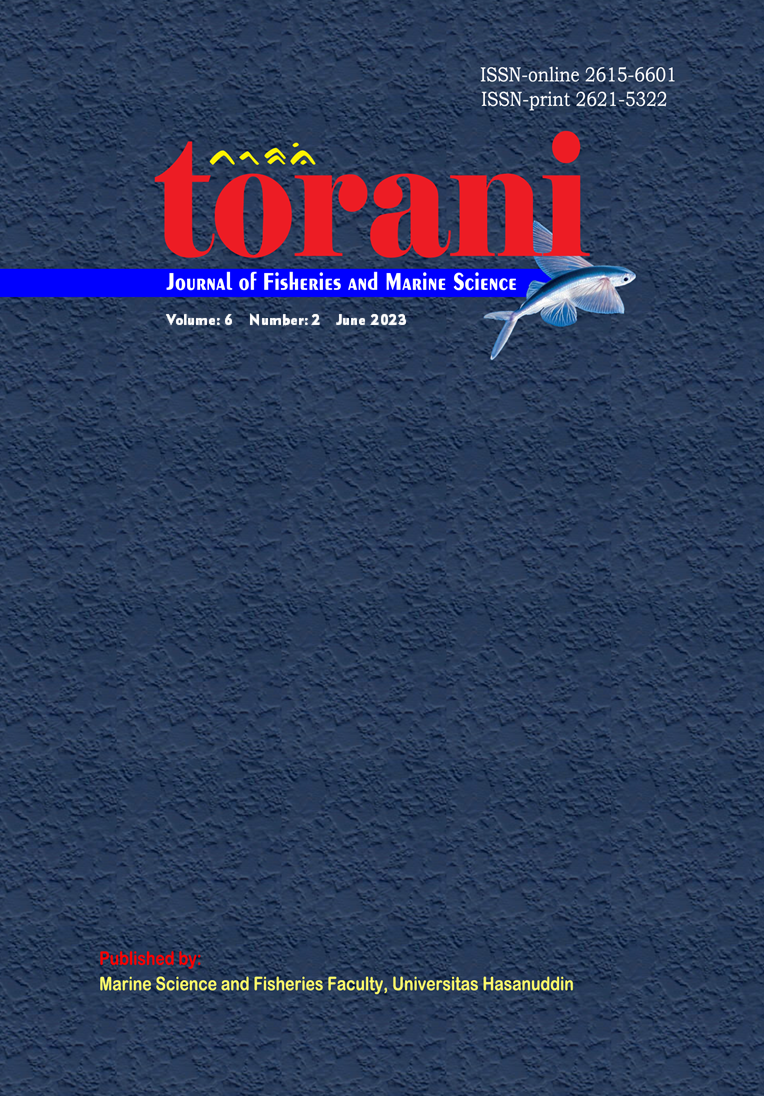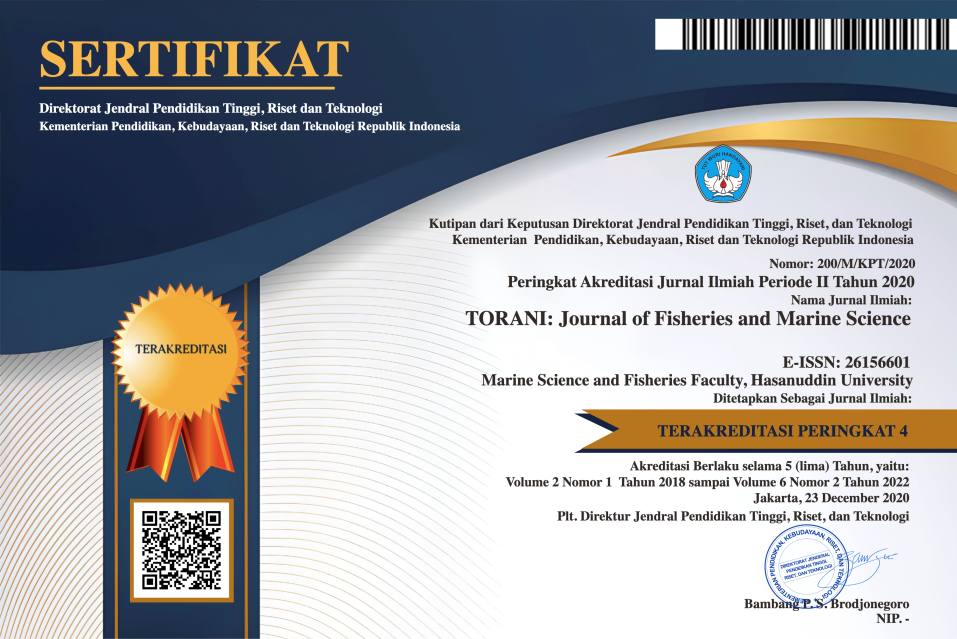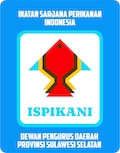Recommendations for Effective Co-Management Model of Small-Scale Grouper (Serranidae) Fishery in South Sulawesi Province
DOI:
https://doi.org/10.35911/torani.v6i2.24605Keywords:
co-management, small-scale fisheries, fisheries improvement project, grouper, south sulawesiAbstract
Governance (policy) that regulates fisheries resources needs to involve industry in the supply chain (market) and small-scale grouper fishermen (community) within a co-management framework so that management is more effective while simultaneously supporting the Fisheries Improvement Project (FIP) which is driven by various parties globally (Conservation Alliance, 2021). This study aims to recommend a small-scale grouper fishery co-management model to be carried out in South Sulawesi Province. This study diagnoses the readiness (enabling condition) and willingness (motivation) of stakeholders so that they can be applied and implemented consistently (implementation). The results of this study indicate that the main approaches and strategies for the co-management model of small-scale grouper fisheries include (a) Optimizing the role of the market that promotes traceability and improving governance through a supply chain approach, (b) Synergy and synchronization of the role of government at all levels through an approach technocratic, (c) Strengthening fishermen and local institutions through a participatory approach, (d) Gathering multi-stakeholder support and collaboration through a collaborative approach. The recommended roadmap for small-scale grouper co-management in South Sulawesi Province includes three main stages, namely: (a) Initiation Stage: Commitment, Support, and Organizing, (b) Acceleration Stage: Joint Committee and Co-management Prototype, and (c) Stage Institutionalization: Scaling up and Organizing Fishermen's Forums.Downloads
References
Ackermann, F., & Eden, C. (2011). Strategic Management of Stakeholders: Theory and Practice. Long Range Planning, 44(3), 179-196.
Bene, C., Christophe , R., Norbury, H., Allison, E. H., Beveridge, M., Bush, S., . . . Williams , M. (2016). Contribution of Fisheries and Aquaculture to Food Security and Poverty Reduction Assessing the Current Evidence. Elsevier, 177–196.
Conservation Alliance, T. C. (Revisi Januari 2021). Pedoman untuk Mendukung Proyek Peningkatan Perikanan (Fisheries Improvement Project). San Francisco, CA, United States: The Conservation Alliance for Seafood Solutions.
Demmallino, B. E., Ali, M. S., Gassing, A. Q., & Lampe, M. (2019). Siratal Mustaqim (Kajian dan Gagasan Transformasi Peradaban Kemaritiman di Negeri Bugis - Makassar Sulawesi Selatan). Makassar: Penerbit Inzani.
DJPT-KKP. (2022). Strategi Pemanfaatan (Harvest Strategy) Kerapu (Grouper) di Wilayah Pengelolaan Perikanan Negara Republik Indonesia (WPPNRI) 713. Jakarta: Kementerian Kelautan dan Perikanan.
Freeman, R. E., & Reed, D. L. (1983). Stockholders and Stakeholders: A New Perspective on Corporate Governance. California Management Review, XXV(3), 88-106.
IUCN, & WRI. (2014). Pedoman Metode Evaluasi Kesempatan Restorasi (Pedoman (Edisi Uji Coba) ed.). Gland, Swiss: IUCN.
Jentoft, S. (1989). Fisheries Co-management: Delegating Government Responsibility to Fishermen's Organizations. Tromso, Norway: Butterworth & Co.
Omar, S. B. (2016). Dunia Ikan. Bulaksumur, Yogyakarta: Gajah Mada University Press.
Raazy, A. F., Moetasim, A. I., Dessibali, N., Zulkarnaen, A., & Rafiq, M. F. (2022). Siasat dari Pulau: Konservasi melalui Tata Kelola Gurita di Pulau Langkai dan Lanjukang. Makassar: Yayasan Konservasi Laut (YKL) Indonesia.
Rangkuti, F. (1997). Teknik membedah kasus bisnis analisis SWOT. Jakarta: PT. Gramedia Pusaka Utama.
White, W. T., Last, P. R., Dharmadi, Faizah, R., Chodrijah, U., Prisantoso, B. I., . Blaber, S. J. (2013). Jenis-Jenis Ikan di Indonesia. Canberra, Australia: ACIAR Monograph No. 155. Australian Centre for International Agricultural Research.



















